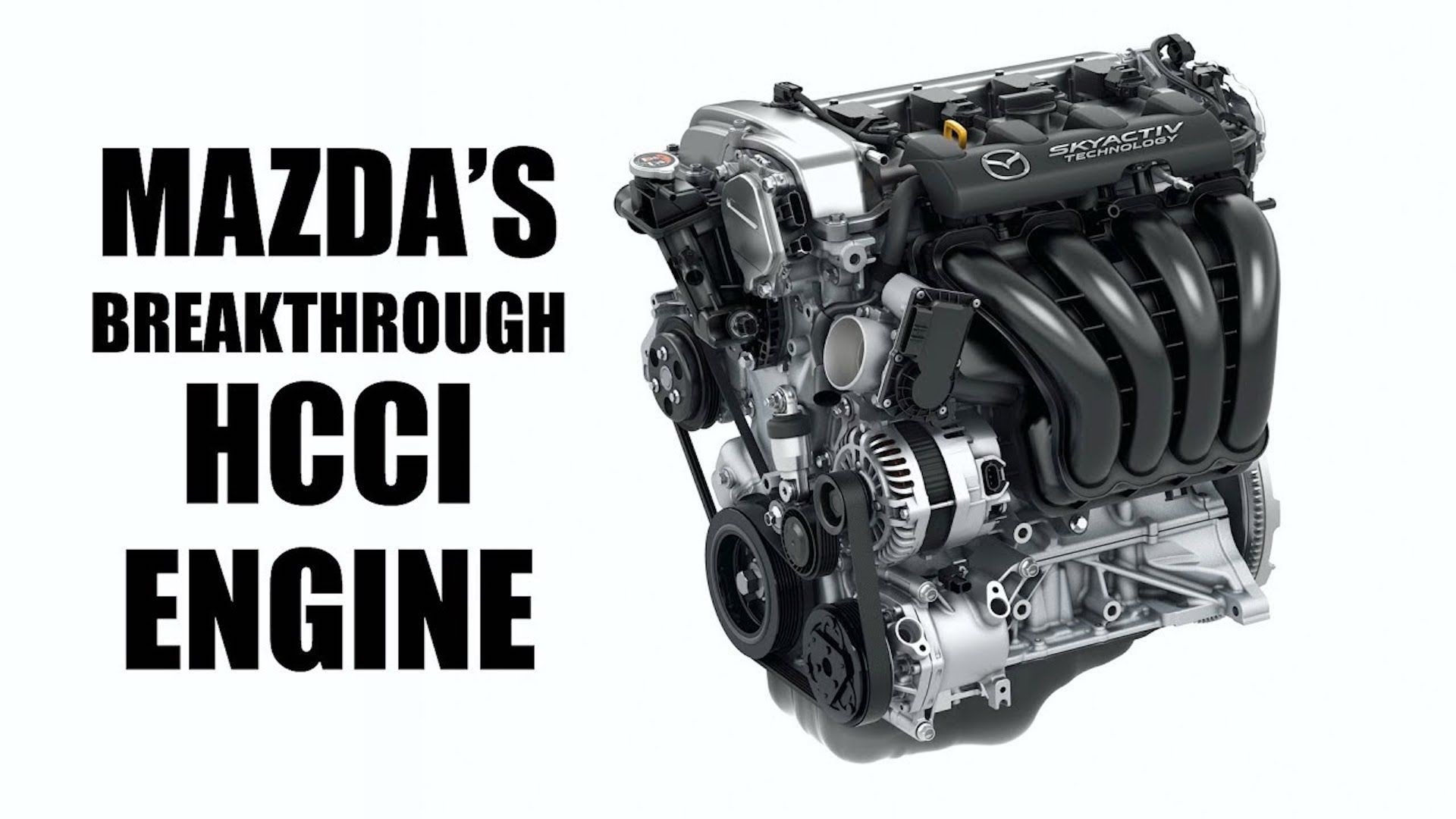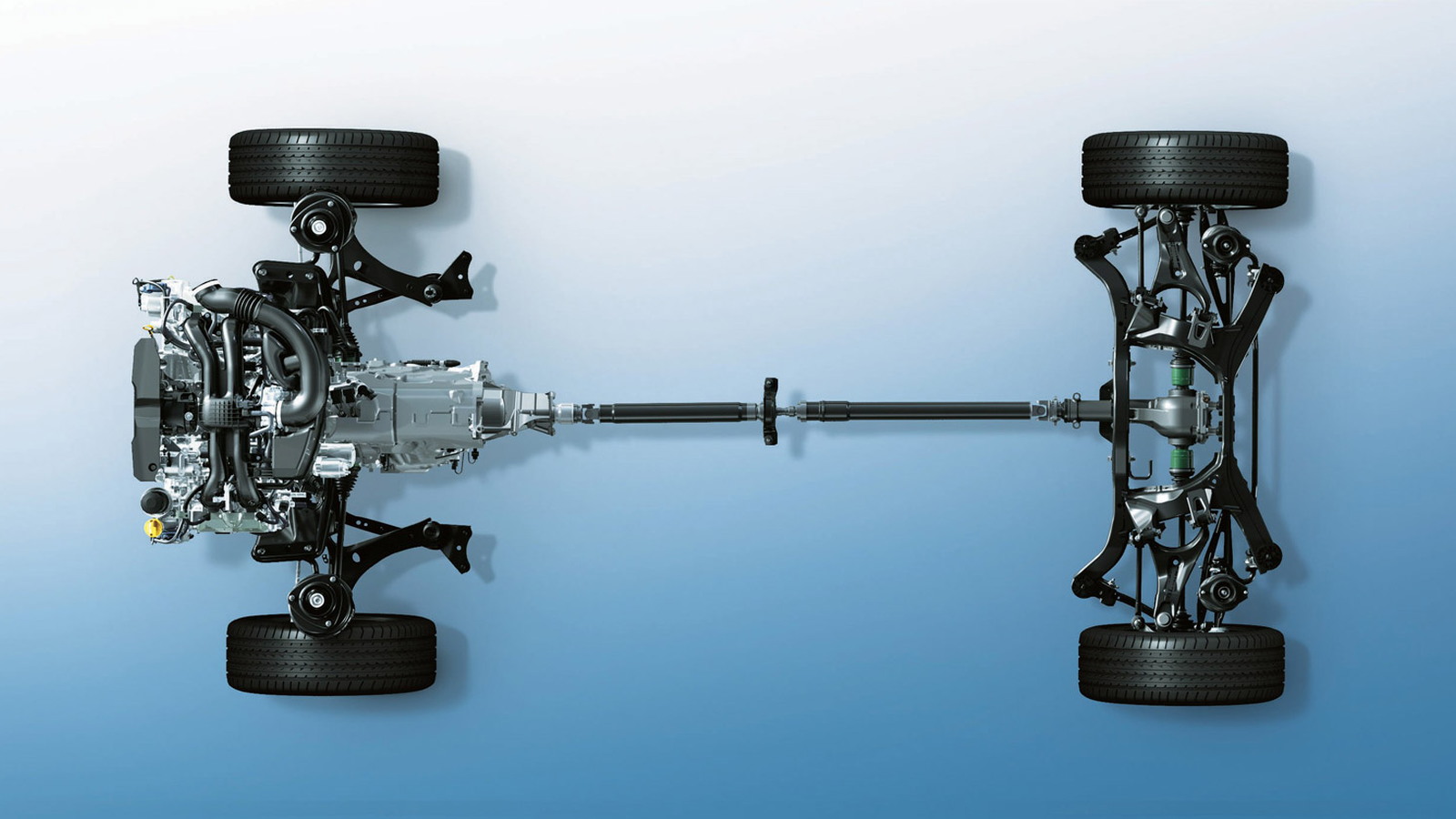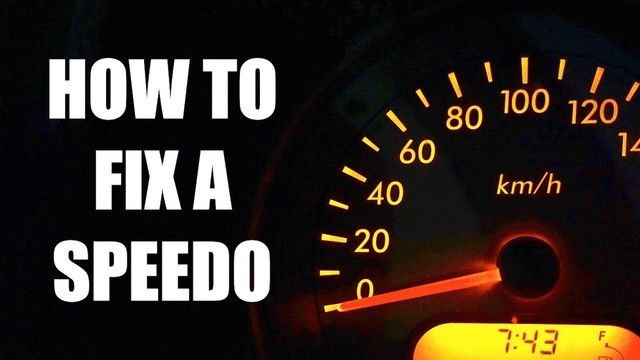How It Works
-

Mazda took the industry by storm when earlier this month it announced plans to introduce gasoline-powered Homogeneous Charge Compression Ignition (HCCI) engines in 2019. HCCI engines are typically referred to as the holy grail of internal-combustion engine technology since they're extremely efficient and promise low emissions. Who better to explain how the technology works than Jason Fenske of Engineering Explained? Thankfully, he's tackled the topic of the gasoline HCCI engine and explained how Mazda plans to solve some of the potential drawbacks that come with the technology. HCCI engines...
-
 What's the difference between flat-4 and inline-4 engines?
What's the difference between flat-4 and inline-4 engines?The 4-cylinder engine has become a standard across the automotive industry thanks to its compact size and efficiency. But, one variant of 4-cylinder engine doesn't rule. There are two popular variations of the 4-cylinder engine: inline-4 and flat-4. Each comes with benefits and downfalls, which is...
Sean Szymkowski -
 Learn how an inline-4 engine works
Learn how an inline-4 engine worksThe inline-4 engine has become a standard powertrain across most automakers' vehicle lineups, due mostly to its small size and efficiency. But, have you ever wondered how inline-4 engine actually operates? Thanks to 3D printing technology, and Engineering Explained's Jason Fenske's commentary, we...
Sean Szymkowski -
 How the Dodge Demon uses its air conditioning to make more horsepower
How the Dodge Demon uses its air conditioning to make more horsepowerWhile it may seem like blasphemy that an air conditioning unit can be used to actually increase horsepower, it's true. Dodge has implemented such a process to help the 2018 Challenger Demon create its immense 840 horsepower, but how exactly does it work? Thankfully, we can always count on Jason...
Sean Szymkowski -
 Replacing brake pads and rotors--it’s not as hard as you think
Replacing brake pads and rotors--it’s not as hard as you thinkNo matter if you buy a new car, a pre-owned car, or lease a vehicle, maintenance is unavoidable. And at some point, the brakes will need to be replaced. Although many will let a mechanic take care of the work, it's not a terribly difficult process. Jason Fenske from Engineering Explained is here to...
Sean Szymkowski -
 5 ways to prepare your car for turbocharging
5 ways to prepare your car for turbochargingJason Fenske from Engineering Explained is once again joined by his friend Charles from Humble Mechanic in this latest informative video which looks at forced induction. Specifically, the topic at hand is about what it takes to add a turbocharger to a non-turbocharged vehicle. Obviously, you'll...
Jeff Glucker -

Most electric cars aren't normally associated with performance, but they are able to achieve something gasoline-powered cars can't: peak torque at zero rpm. It's thrown around often, and many will comment on how quick an electric car feels around town thanks to maximum torque delivered instantly. If in doubt, just take a ride in a Tesla Model S and ask the driver to drop the hammer. But how does an electric car achieve this? Jason Fenske from Engineering Explained is back to make sense of the gadgetry going on. Foremost, it's important to realize there isn't an engine under the hood of an...
-
 Here's how Subaru's 4 all-wheel-drive systems work
Here's how Subaru's 4 all-wheel-drive systems workSubaru has carved a niche in the vast automotive industry by doing one thing: equip every single car it sells with an all-wheel-drive system. That's minus the BRZ, of course, which features rear-wheel drive. How does Subaru's system actually work? Jason Fenske of Engineering Explained is here to...
Sean Szymkowski -
 Learn how Subaru's Boxer engine works via this 3-D printed working model
Learn how Subaru's Boxer engine works via this 3-D printed working modelThe term is thrown around often, but what actually constitutes Subaru's "boxer" engine? With the insightful mind of Jason Fenske and a 3-D printed model of a 4-cylinder boxer engine, we're all in for some learning. In this video, Jason, host of Engineering Explained, walks viewers through the...
Sean Szymkowski -
 Do performance brake rotors have better cooling?
Do performance brake rotors have better cooling?The upgrades continue for the Engineering Explained Honda S2000. The YouTube channel's host, Jason Fenske, is using his yellow sports car for more than just whipping around his local backroads, as it's also serving as a bit of a teaching tool. As he upgrades the car, we're all going to learn...
Jeff Glucker -
 What's inside Tesla's battery pack?
What's inside Tesla's battery pack?EV West has shown us the proper way to break down a Tesla Battery pack. They remove multiple modules in order to reuse them under the skin of cool projects. What if you just want to rip open a module to see what's inside? Well, you don't need to do it as cleanly as EV West. Instead you can just...
Jeff Glucker -
 How does an electric car work?
How does an electric car work?Maybe not so shockingly (pun intended), many drivers don't know how an electric car actually works. For many, the knowledge spans as far as plugging it in, letting charge, and driving it off. It's not really as simple as that, even though an electric motor is comprised of far fewer moving parts...
Sean Szymkowski -

Lego bricks allow folks to craft plastic, blocky versions of whatever exists in their heads. For some, this means following a given set of instructions to build a complete pre-packaged kit. For others, however, a bunch of Legos is a pathway to wondrous creativity. We've seen a concept hover bike, a detailed Jeep Wrangler, and more. Now, though, we have a working 6-speed manual gearbox for your consideration. Using parts from an unnamed Lego Technic kit, a crafty 17-year-old builder from Sweden has created a basic 6-speed manual gearbox complete with input and output shafts. When an electric...
-
 Here's how those sinkholes that sometimes swallow cars actually form
Here's how those sinkholes that sometimes swallow cars actually formA sinkhole is a devastating, geological assassin. It arrives seemingly out of nowhere and can cause serious destruction to roadways, homes and cars. But how does such a dangerous situation manifest right below our feet and tires? It's mostly related to water. This video provides a great visual...
Jeff Glucker -
 Why does Volkswagen have a water-cooled exhaust?
Why does Volkswagen have a water-cooled exhaust?The Volkswagen Group loves its EA888 engine, found in popular models such as the Volkswagen Golf and Audi A3. This is the turbocharged inline-4 available as a 1.8-liter or a 2.0-liter and with power outputs ranging from about 170 to a bit over 300 horsepower. It also has a unique exhaust manifold...
Jeff Glucker -
 This is how your fuel pump works
This is how your fuel pump worksAre you curious about the bits and pieces that make your car do its thing? Sure you are, and today is a good day for you. That's because we've got a video here that will take you on a deep dive of your fuel pump. We're talking abyss levels of deep here. The fuel pump gets removed for your viewing...
Jeff Glucker -
 Finding the difference between 17-, 18- and 19-inch tires
Finding the difference between 17-, 18- and 19-inch tiresThere's a balance to be found when you're on the hunt for a set of wheels and tires for your vehicle. Do you prioritize comfort over performance? Are you looking to increase the handling capability and feel of your car? Perhaps you want to wind up somewhere in the middle of the two ends of the...
Jeff Glucker -
 How 4WD works: 4Hi vs 4Lo vs 2Hi
How 4WD works: 4Hi vs 4Lo vs 2HiA modern vehicle can do a number of things for its driver. It can regulate traction, keep your braking pressure from locking your stoppers up, and make sure your engine doesn't exceed a given rev limit. Heck, a modern car can keep you in your lane and stop you from hitting the car in front of you...
Jeff Glucker -

The Volkswagen VR6 has been an incredible addition to the vast timeline of automotive engines. It saves space like an inline 4-cylinder, yet allows for increased power and torque production like the V-6 that it always has been. It made its debut before the days of mass-market turbocharging, and, at the time, the VR6 was the hottest of engines from VW. However, as time marches on, engines are becoming smaller and increasingly feature more forced induction from turbochargers. It's led to the death of many V-6 engines and the VR6 is likely on its way out, too. In this video, Jason Fenske of...
-
 Do wider tires actually have more grip?
Do wider tires actually have more grip?Tires are an absolutely essential part of any car, truck, or SUV. Compounds can create unique handling experiences suited for any type of vehicle, and they can even make a car much more fun to drive. It's also a common saying that wider tires provide more grip. In the interest of science, Jason...
Sean Szymkowski -
 How can the Nissan Titan brake quicker than a Mini?
How can the Nissan Titan brake quicker than a Mini?A Nissan Titan weighs 5,811 pounds. A Mini Countryman weighs 3,629. The former requires a shorter distance to reach a complete stop from 60. Sounds crazy, but it's true, and Jason Fenske from Engineering Explained is here to, well, explain how the full-size pickup truck can out-brake a Mini...
Sean Szymkowski -
 How the active aerodynamic system works on the Lamborghini Huracán Performante
How the active aerodynamic system works on the Lamborghini Huracán PerformanteThe Lamborghini Huracán Performante is the king of the Nürburgring. It currently holds the track's quickest lap time of 6:52.01, and it ousted the Porsche 918 Spyder in the process from the top spot. How did it get there? We're glad you asked. So is Jason Fenske of Engineering Explained...
Sean Szymkowski -
 What happens when you run winter tires in the summer?
What happens when you run winter tires in the summer?By this point, as we enter the middle of May, most drivers who use soft-compound winter tires have likely switched them out for a set of all-season rubber, or even some higher-performance summer-only tires. However, what happens if you keep those winter tires on your car and run them in warm...
Sean Szymkowski -
 How to fix a misreading speedometer
How to fix a misreading speedometerIt's a problem many may not know they're experiencing until flashing lights in the rearview mirror tell them otherwise. How do you know if your vehicle is reading an accurate speed? And if it isn't accurate, how do you go about fixing the problem? Have no fear, because Jason Fenske from Engineering...
Sean Szymkowski























